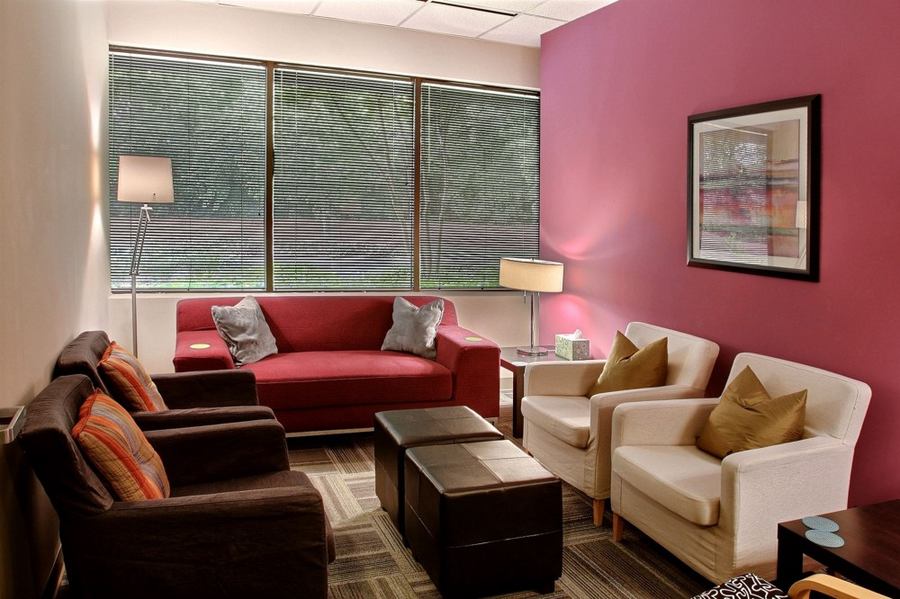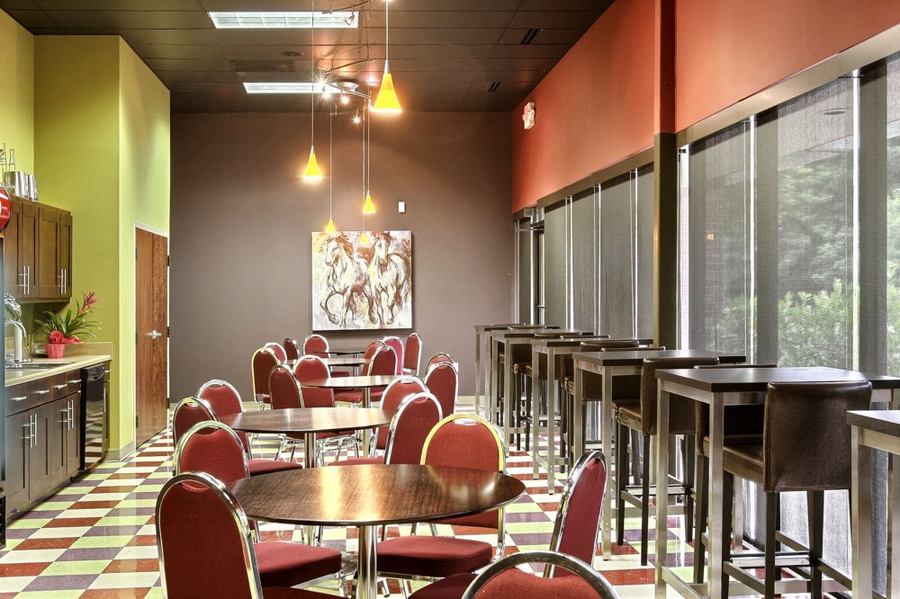
In Six Years, You’ll Be More Mature — What If You Could Be That Person Today?
Well, maybe ‘today’ is a bit ambitious, but realistically, what if you could experience six years worth of personal growth in just six months? That’s the promise of a leadership program based in development theory here in Atlanta Georgia.
As I mentioned in my previous article, I’m getting to go through the Leaders Lyceum’s multi-corporate personal development program in exchange for sharing my experience along the way. The program consists of five full-day sessions over the course of six months with cross-mentoring group calls every two weeks during the program.
Here’s The Outline For All Five Sessions
- Session 1 — The Map: Developmental Journey & Leaders Lyceum Model
- Session 2 — The Vehicle: Strengths, Struggles, & Personality
- Session 3 — Baggage: 360 Feedback
- Session 4 — Destination: Values, Legacy, & Leadership
- Session 5 — Fuel: Sustained Growth & Growing Others

The Day’s Events
I’ve completed session 1 of the program exploring the formula for change, the five research-backed personal levels of maturity, how those levels affect our effectiveness, what it means to develop the whole person, and a tool to help identify opportunities for personal growth and act on them (See last section of this blog). Throughout the day, we also break into nicely designed rooms (above) to talk through these in-depth.
Yeah, it’s a lot. Like drinking from a fire hose. Unlike many of the other participants, it was nice to have a familiarity with the content after working with the Leaders Lyceum in the past and reading Keith Eigel & Karl Kuhnert’s book, The Map. This also gave the advantage of finding out the perspective other people were coming into the program with.

What Others Were Expecting
In the dining area (above), I asked those congregating around the food about where they came from, what they heard about it and what they were expecting from the program. I was surprised to learn how many people were being flown in from other states to participate in the program. Over the course of the six months, these folks will end up flying in, five times. To not only spend the money and time to experience the program, but also facilitate this travel, they and their company must value this program at a high level.
I was also interested to hear that one of the most impactful moments in the program revolved around session number three and the 360 survey. People were told about how intense this could be from those who had gone before them. While they were unsure of what to specifically expect from this feedback of peers, they were also somewhat unnerved to get the feedback from their spouse.
If you’re not familiar with a 360 survey, it’s essentially a survey where the people you work with and, in this case, the person you’re married to provide unfiltered feedback, both positive and negative, about you. If you’ve not experienced this type of activity before, it can be quite destabilizing. At the same time, it can also act as a significant catalyst for personal growth, which is why the Leaders Lyceum leverages it.
Well, the day was about to begin, so I headed back into the main room ready to learn from this new experience.

The Day Begins
While there is no way I could successfully share everything that went down at the Leaders Lyceum in a write-up like this, I can share about how they care and facilitate the program to not just help people become more effective in their work, but also to help them be a better spouse, parent, as well as receive a better understanding of what we believe and why. They’re developing the whole person and it starts with understanding some key principles.
Early on, they pulled up a map on the screen project above. On this map was us in Atlanta and a photo of Disney World in Florida. Disney World is the person we want to become, and Atlanta is the person we are today. For us to become this person, we need to understand where we are, where we want to go and how we can get there.
Throughout the day, we went through a series of teachings to help us understand the process and what it takes to go from one level to the next (five levels total). Along the journey, we were given a tool to help us discover how we can change ourselves into the person we want to become, and it starts by complaining. Didn’t expect that, did you?

How Do I Change Myself? Start With A Complaint!
We all have complaints about something in our life. It could be about others, ourselves, or a number of other things. While these complaints are a great reflection of ourselves (depending on who you ask!), most people usually stop at the complaint instead of leaning into it, understanding what we value, and learning where we’ve failed. From this honest reflection, we can truly begin taking the small steps to accomplish our goals and become the person we want to be.
One of the challenges given to the students on the first day is to determine a GO (Growth Objective) statement which stems from the process of reflecting on one of our complaints or desires in life. One of the areas I desire to improve is the relationship I have with my kids.
With as hectic as our life has been over the past few years, I’ve not wanted to blink and miss out on the time I could have spent with my kids. As a result, I ended up incorporating a monthly one-on-one date with each of my four children. Every Saturday I’ll take one of my children out for a meal to hang out and talk. With four kids, I’ll take each one by the end of each month and start the cycle over again the following month. This has been a fruitful endeavor, but I also want to make sure I’m spending personal time with each of them on a daily and weekly basis. I want engaging one-on-one time together.
As part of the program on day one, we’re given what’s called a growth gap tool. It’s a sequence of written activities and questions to help us better understand our values, challenges and where we have an opportunity to grow if we choose to do so.
My desire is to consistently have meaningful and engaging relationships with my four children on a day to day basis. I want this is because I value consistent relational presence, meaningful interactions, family unity, acceptance, and having fun together. I also want to model healthy relational dynamics and intimacy by sharing the love with them as a way to set them up for success and empower their future flourishing.
To help me accomplish my goal and live out my values I need to more strictly enforce my work boundaries. By preventing my work time from overlapping personal time I’m not “robbing” my kids of the personal time we could spend together on a day-to-day basis. In addition, I could lean into this time with each of my kids by scheduling a cadence to seek out time with them in a proactive way.
So what has kept me from acting on these values and doing what I’ve not been doing? There is a desire to fulfill my financial obligations and a fear of not doing this well. The work I do financially provides for my family and when I’m not working, I’m not contributing. Also, by giving time to my children, I’m putting my personal aspirations on the back burner. I also fear I may have less freedom and enjoyment of life. I don’t want to be locked into something I don’t want to do at the cost of what matters. I don’t want to sacrifice my personal goals.
In order to protect myself, I push changes to the future, only make small steps, ignore it, delay it, do it partially or without much effort. This reveals to me that I’m more interested in my personal agenda, getting what I want, financial success, personal freedom and overall, a good bit of selfishness.
As I extracted this helpful and somewhat unpleasant information about myself, our goal is not to immediately resolve the problems but to instead sit in this insight while I leverage this tension for personal growth. I want to change this aspect of my life, but ultimately I want to change this aspect of my personal character.
To help us accomplish this, the Leaders Lyceum provides another tool. We’re directed to establish our GO (Growth Objective) statement and the small steps we can take today to move towards our goal. For me, I decided to leverage my personal mission statement and add the details to make it more relevant to this situation. My GO statement became, “Share Life Daily With My Kids”. To define it further, I’d spend meaningful time consistently with each of my kids. In this situation, consistency and meaningful time mattered because I was spending time daily with my kids, but it was more group-oriented and less intimate.
My small steps would be two-fold. First, I would promptly end my work day at 6 pm during the week (since I don’t work weekends) and second, I would intentionally spend five minutes one-on-one with each of my four children every day, an idea inspired by a friend. To help me achieve these small steps, I’ll add them into my habit management tool so I’m reminded what I need to do and when. Tracking it for myself will allow me to see how I’m actually doing. In fact, it allowed me to see that I had a fifty percent success rate during my first thirty days for both small steps.
I also have a group of people to hold me accountable to these two small steps. As part of this development program, we’re paired with three others that make up our Cross Mentoring Group (CMG). Since the program meets every six weeks, we do two calls in-between these sessions with our CMG to discuss our GO Statement, small steps, and how things are progressing for us.
After the first session of prodding with my CMG, I decided to shift up my second small step and instead of focusing on daily five minutes with each of my four children, I’d instead shift my effort to spending one-on-one time weekly. My GO statement would become “Consistently Spend Meaningful Time With My Kids Weekly”. This would allow me to the opportunity to spend more time with each of them one-on-one while also preventing the scramble each day to make it happen. I’d have seven days to make it happen with each child, so with four kids, I’d have a buffer of three days to correct a failure if something came up.
As part of the program, I also met with Lydia, one of the team members at the Leaders Lyceum to discuss my GO statement and small steps. In the process, we came to the conclusion that I needed to shift from meaningful to present terminology. Being present with my kids was more quantifiable and easier to track in terms of whether I was doing it or not. And, I don’t control how meaningful the time I have with my kids is, but I can control how present I am. My GO statement became “Spend Time Present With My Kids Weekly”.
In addition to this fine tuning, Lydia also helped me realize how my value of TIME was driving my behavior. This was an interesting insight that I’ve since pondered further, but have yet to discover how to apply more precisely in my life.
Shortly after this meeting, my wife reminded me of the kids taking swimming lessons which would take place on a weekly basis. The dots connected and I volunteered to teach them instead. We recently moved into a home community which has a pool, so spending a night each week with one of my children would give me the opportunity to spend forty-five minutes together one-on-one as well as accomplishing something together. While there could be inherent challenges in teaching my own children how to swim, I’m more than happy to take the risk and guide them as far as I’m able.
So for the summer, I’ve now got my weekly time planned out for my kids and I’m excited about it. It also gives my children something to look forward to, talk about and connect before and after the event itself.
I’m excited to see how this journey plays out. As I share it, I’ll hopefully inspire you to accelerate your growth from six years to six months!
- Created on .
- Last updated on .